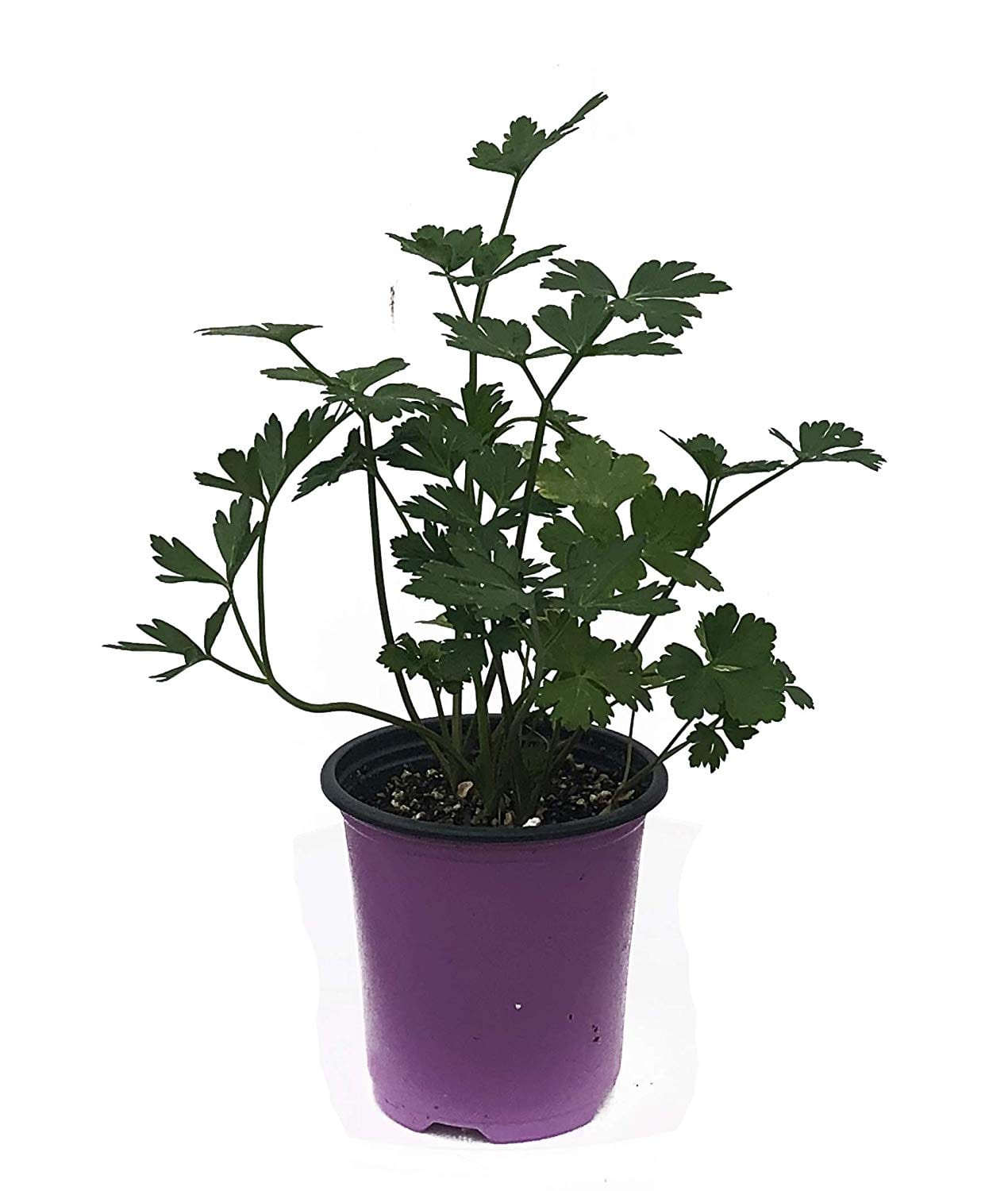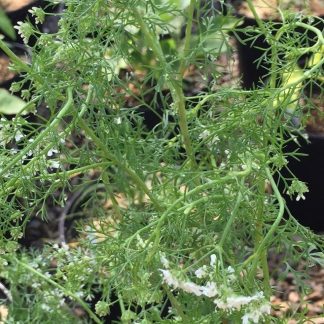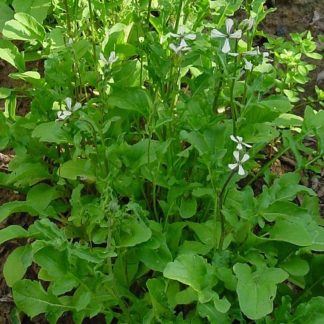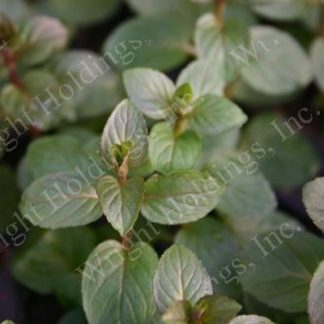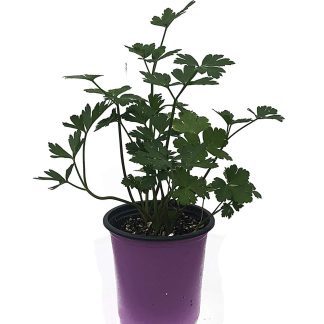Description
Everything You Need to Know About Growing Petroselinum crispum—Flat Italian Parsley
Flat Italian Parsley, scientifically known as Petroselinum crispum, is more than just a garnish. It’s a kitchen essential with bright flavor and incredible versatility. Whether you’re an experienced gardener or a beginner just starting your gardening journey, Flat Italian Parsley is a rewarding herb to grow. In other words, it’s a superstar plant that deserves a spot in every garden.
Why Flat Italian Parsley?
Flat Italian Parsley stands out from its curly cousin due to its robust flavor. The leaves are broad, flat, and packed with intense, fresh taste. Chefs prefer it for cooking because its flavor holds up well under heat. But most of all, it’s the ease of growing that makes Flat Italian Parsley a gardener’s favorite. Even if you’ve never gardened before, you can successfully grow this flavorful herb.
Perfect Conditions for Thriving Parsley
Flat Italian Parsley thrives under simple conditions:
- Sunlight: It loves full sun but can tolerate partial shade. Ideally, give it 6 to 8 hours of sunlight each day.
- Soil: Well-drained, nutrient-rich soil is perfect. Compost-enriched garden soil or a good-quality potting mix will keep parsley happy.
- Water: Consistent watering helps parsley grow lush. Keep the soil moist but not waterlogged.
In other words, parsley grows beautifully when conditions are simple, steady, and predictable.
Starting Your Flat Italian Parsley
Starting parsley from seed is straightforward:
- Soak Seeds First: Parsley seeds have a hard outer coating. Soak them overnight to speed up germination.
- Planting: Sow seeds about 1/4 inch deep in the soil. Space them around 6 to 8 inches apart.
- Germination: Parsley can take between 2 to 4 weeks to germinate. Be patient, and you’ll see those tiny green sprouts soon enough.
After more than two weeks of waiting, seeing that first sprout is incredibly rewarding!
Caring for Your Growing Parsley
Once your parsley is growing, caring for it is easy:
- Fertilizing: Feed parsley with balanced organic fertilizer every 4-6 weeks.
- Mulching: A layer of mulch helps retain moisture, suppress weeds, and keep parsley thriving.
- Regular Harvesting: Harvest regularly by snipping leaves to encourage new growth. The more you pick, the more it grows!
Instead of worrying about complicated care routines, keep it simple. Parsley is happy with minimal fuss.
Common Parsley Challenges
Parsley is easygoing, but a few common challenges might come up:
- Yellowing Leaves: Usually due to overwatering or poor drainage. Adjust watering and ensure good soil drainage.
- Slow Growth: Parsley naturally grows slowly initially. Be patient; once established, growth accelerates.
- Pests: Occasionally, aphids or caterpillars might visit. A gentle spray of water or insecticidal soap easily fixes the issue.
In other words, with quick attention, most parsley challenges are easily solved.
Parsley’s Health and Culinary Benefits
Flat Italian Parsley isn’t just flavorful; it’s nutritious too. Packed with vitamins A, C, and K, it boosts your immune system, strengthens bones, and promotes healthy skin. Parsley also contains antioxidants and anti-inflammatory properties, making it a valuable addition to your diet.
Culinary-wise, Flat Italian Parsley is incredibly versatile. Use it in:
- Fresh salads
- Rich soups and stews
- Flavorful marinades
- Zesty sauces and pestos
In short, parsley elevates almost any dish you create.
Harvesting and Storing Your Parsley
Harvest parsley regularly by snipping outer leaves, leaving the inner leaves to keep growing. For long-term storage:
- Drying: Air dry bunches in a warm, dark place. Store in airtight containers.
- Freezing: Chop fresh parsley, place it in ice cube trays with a bit of water or oil, and freeze.
This way, you’ll enjoy fresh parsley flavor even during winter months.
Parsley in the Garden Ecosystem
Flat Italian Parsley doesn’t just benefit your cooking—it helps your garden too. Parsley attracts beneficial insects like ladybugs, hoverflies, and pollinators. It also helps deter pests from other garden plants.
Planting parsley near tomatoes, peppers, and carrots improves growth and flavor. After more than a season of parsley gardening, you’ll notice healthier plants overall.
Beyond the Kitchen—Decorative Uses
Parsley isn’t limited to culinary purposes. Its vibrant green foliage adds a beautiful, lush appearance to garden borders and containers. Mix it with flowering annuals or herbs like basil and rosemary for a visually appealing container garden.
Unique Reasons to Grow Flat Italian Parsley
- Easy for Beginners: Perfect for gardeners of all skill levels.
- Health Boosting: Rich in vitamins and antioxidants.
- Garden-Friendly: Attracts beneficial insects and aids companion planting.
In short, Flat Italian Parsley is a versatile, valuable addition to any garden.
Cultivate Freshness, Flavor, and Beauty
Flat Italian Parsley offers endless possibilities. It’s easy to grow, packed with nutrients, and beneficial for your garden ecosystem. Most importantly, it’s delicious and versatile in cooking. So, plant some Flat Italian Parsley, and watch your garden—and your dishes—come to life!

